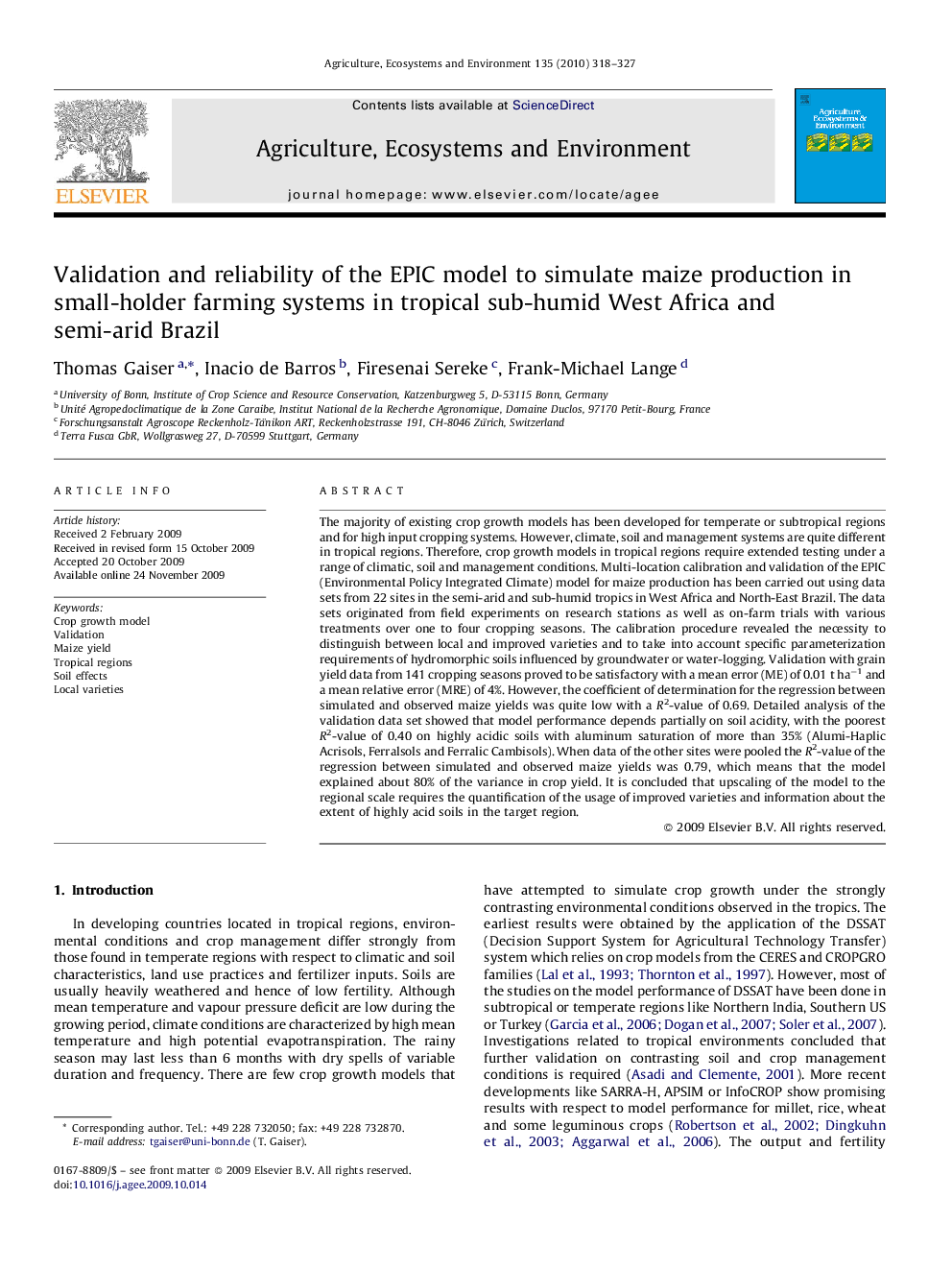| کد مقاله | کد نشریه | سال انتشار | مقاله انگلیسی | نسخه تمام متن |
|---|---|---|---|---|
| 2415080 | 1103945 | 2010 | 10 صفحه PDF | دانلود رایگان |

The majority of existing crop growth models has been developed for temperate or subtropical regions and for high input cropping systems. However, climate, soil and management systems are quite different in tropical regions. Therefore, crop growth models in tropical regions require extended testing under a range of climatic, soil and management conditions. Multi-location calibration and validation of the EPIC (Environmental Policy Integrated Climate) model for maize production has been carried out using data sets from 22 sites in the semi-arid and sub-humid tropics in West Africa and North-East Brazil. The data sets originated from field experiments on research stations as well as on-farm trials with various treatments over one to four cropping seasons. The calibration procedure revealed the necessity to distinguish between local and improved varieties and to take into account specific parameterization requirements of hydromorphic soils influenced by groundwater or water-logging. Validation with grain yield data from 141 cropping seasons proved to be satisfactory with a mean error (ME) of 0.01 t ha−1 and a mean relative error (MRE) of 4%. However, the coefficient of determination for the regression between simulated and observed maize yields was quite low with a R2-value of 0.69. Detailed analysis of the validation data set showed that model performance depends partially on soil acidity, with the poorest R2-value of 0.40 on highly acidic soils with aluminum saturation of more than 35% (Alumi-Haplic Acrisols, Ferralsols and Ferralic Cambisols). When data of the other sites were pooled the R2-value of the regression between simulated and observed maize yields was 0.79, which means that the model explained about 80% of the variance in crop yield. It is concluded that upscaling of the model to the regional scale requires the quantification of the usage of improved varieties and information about the extent of highly acid soils in the target region.
Journal: Agriculture, Ecosystems & Environment - Volume 135, Issue 4, 1 February 2010, Pages 318–327